Distance: 118km (Cumulative: 12 594km)
Moving time: 4:10
Average speed: 28km/h
Road surface: 99% Tar
Accommodation: Camping
Kili Springs Camp - R130 p.p
Very friendly owner, spacious safari tent with hot shower and western toilet.
We left Mama Simba’s Homebase by 08:40 after receiving a warm goodbye. We first headed back to Milan’s Restaurant as we wanted more Paneer Samosas, but unfortunately they did have any that early in the morning.
We then bought some beef samosas at another place which wasn’t as good. After using the last of our cash at Total to refuel we headed for Tarakea. The road was in near perfect condition and the scenery was amazing. The winding road goes over the foothills of Kilimanjaro through forests and banana plantations.
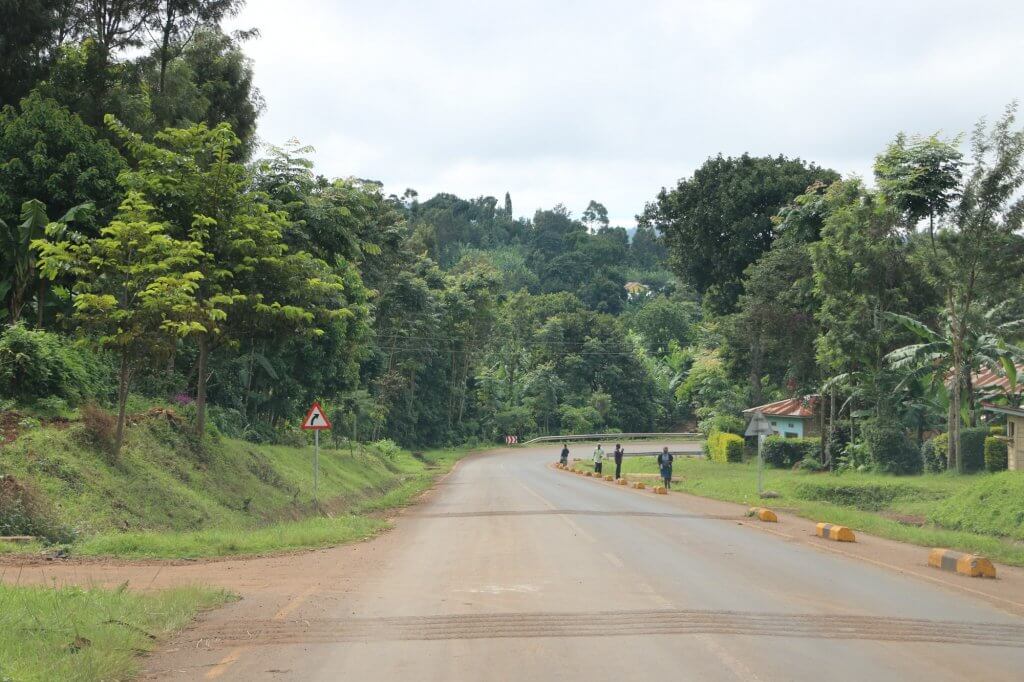
We passed 100s of people carrying massive green banana branches. Some who had bicycles could carry two or three and with motorcycles up to four. We eventually saw everyone was taking it to some central point where lorries picked it up. We kept trying to see Kilimanjaro, but it was still covered in clouds. As we got closer to the border the tip of the mountain started to peak out over the clouds.
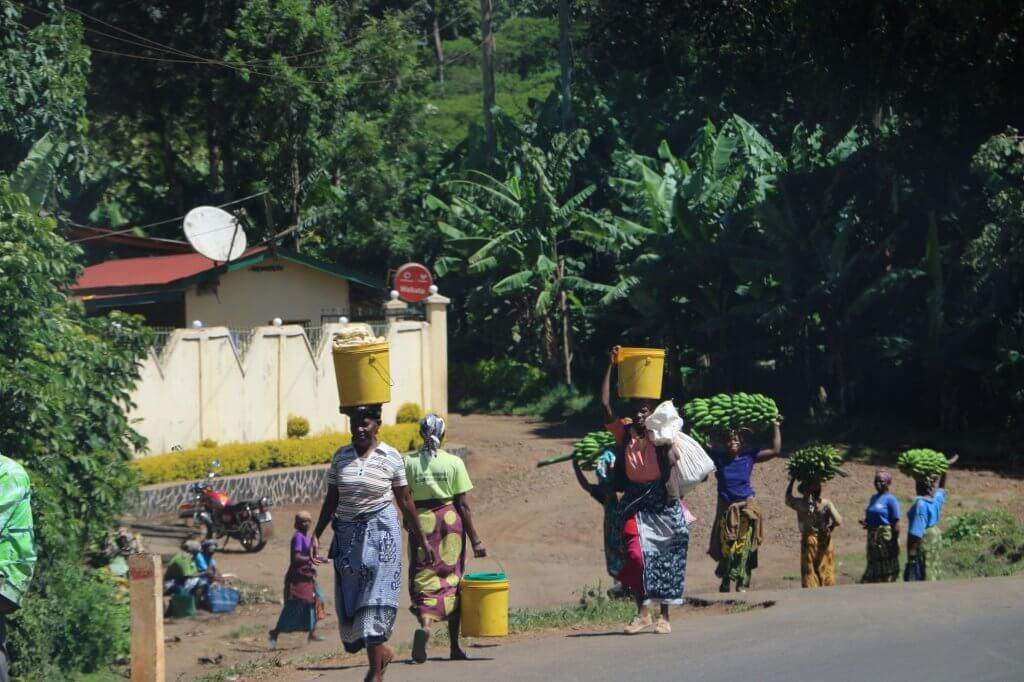
We got to the Tarakea border at 11:40. It is a really small border and we were basically the only people trying to go through at that time. At immigration the guy just took our passports and stamped us out, we didn’t even fill in any forms ourselves.
We then went to customs where a very friendly guy helped us with the Carnet. He however requested the Road Tax papers we got when we entered and saw that we are over the month limit – we would have to pay an extra 20$. The only problem was that they didn’t have any means to accept money. He printed out an invoice which Hugo had to take to the bank in Tarakea (2km away). The bank doesn’t accept dollars so Hugo had to get shillings from the ATM, which means the bank fees were 50% of the amount withdrawn.
At the Kenyan side the immigration officer also just stamped our passports for a month, South Africans don’t need a visa, without any paperwork. At customs we had to pay $40 for something. On the AA website it said we needed to pay $25 for a foreign vehicle permit and $40 a licence for foreign private vehicle. They, however, claimed that they don’t accept dollars and then pretended that we will need to exchange it on the ‘Black Market’ for a not so good exchange rate, basically $50 for the equivalent of $40 in Kenya Shillings. Since it seemed like we had no choice, we accepted and then they let us pay the $50 in the office. So in the end we paid more than we should have, but less than what we expected.
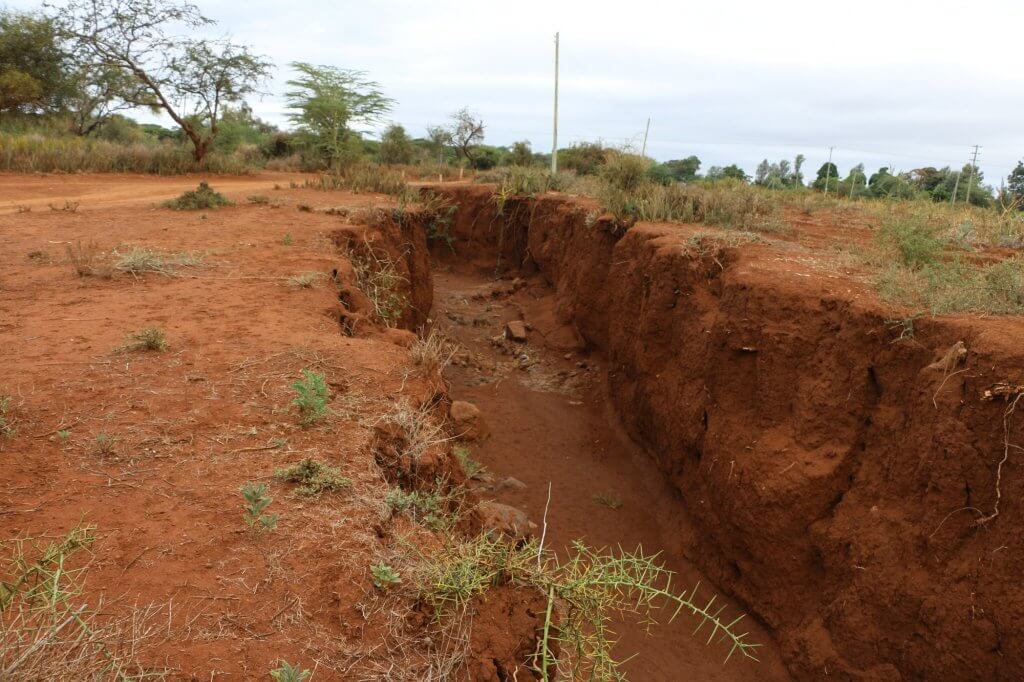
We left the border at 13:00 and immediately the landscape changed dramatically. The Kenyan side was almost dessert like with massive erosion everywhere. It did, however, look more like the typical image of African bush safaris. Kilimanjaro opened up completely and we could see it in all it’s glory, except it didn’t really look that magnificent. There were no visible snow and without anything to compare it against, it just looked like a small hill, certainly not the highest mountain in Africa. Hugo summited Kilimanjaro 10 years ago, so he has a big incentive to make it sound super amazing, but he agrees that at this stage from this angle it didn’t look that impressive.
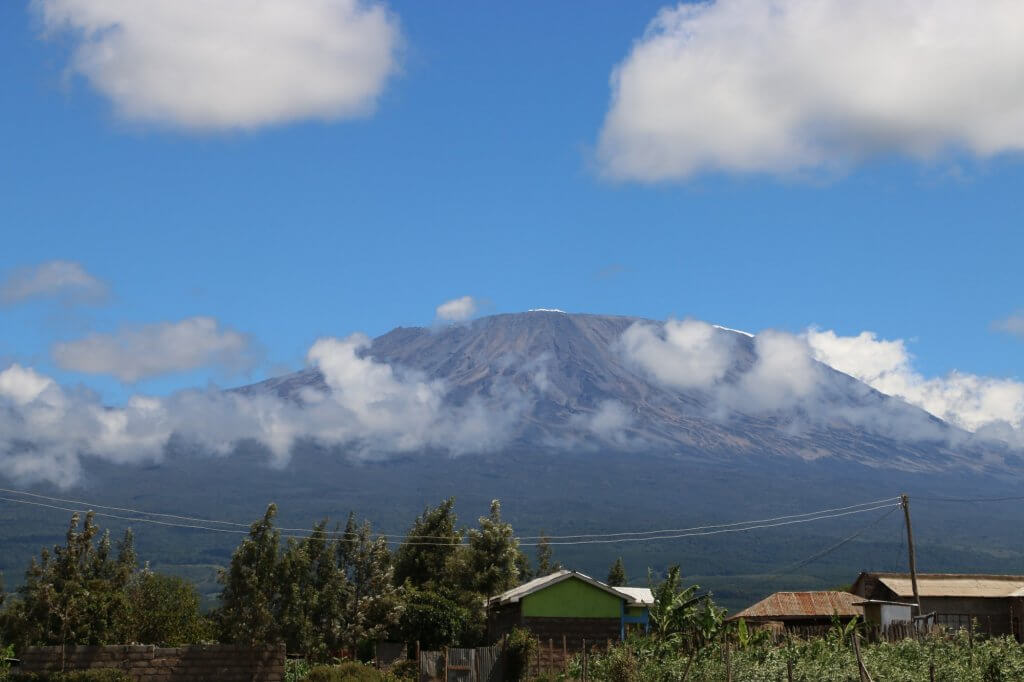
We stopped in Oloitoktok (or Loitokitok) to get a local simcard and to try and find third party insurance. After just more than an hour Hugo got a Safaricom simcard, registered for M-Pesa and loaded some money on it. The ATM can give up to 40 000 Kenyan Shillings (R5000+), which is more than double what we could get in Tanzania, so our bank charges should be about 50% cheaper in Kenya as we don’t have to withdraw cash that often.
No-one knew where we can get insurance so we just left to Kili Springs Camp. We found the turn-off easily just after the Shell. We stopped to take a photo of Kilimanjaro which started too look better from a distance. Just then a Land Cruiser with a friendly Masai stopped in front of us. Turns out he is the owner of Kili Springs. We followed him to the camp. We wanted to sleep in our roof top tent, but there isn’t really flat spaces for a car. He offered us a safari tent for basically the same price as camping – 1000 KES each.
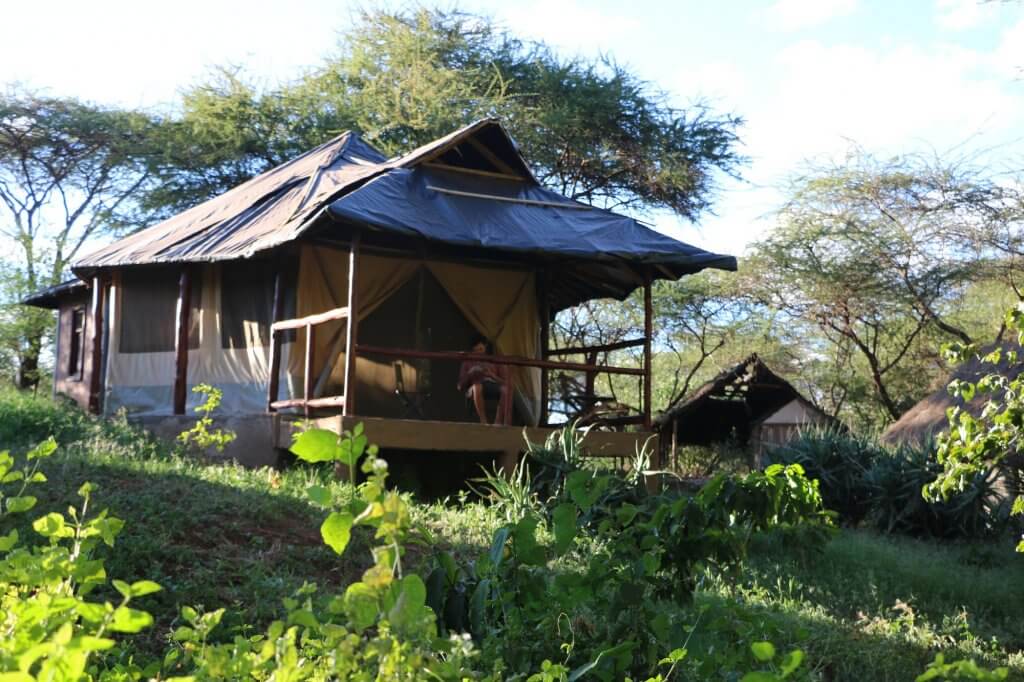
Hugo took an afternoon nap while Caro explored the area and took some more photos of Kilimanjaro. For dinner we wanted to make pancakes, but didn’t have eggs. One of the Masai offered to go buy some for us. It got dark and we started to worry about him, but half an hour later he returned with 6 eggs. Caro made tuna and mayo filling again and for dessert we had pancakes with Nutella and whipped cream.
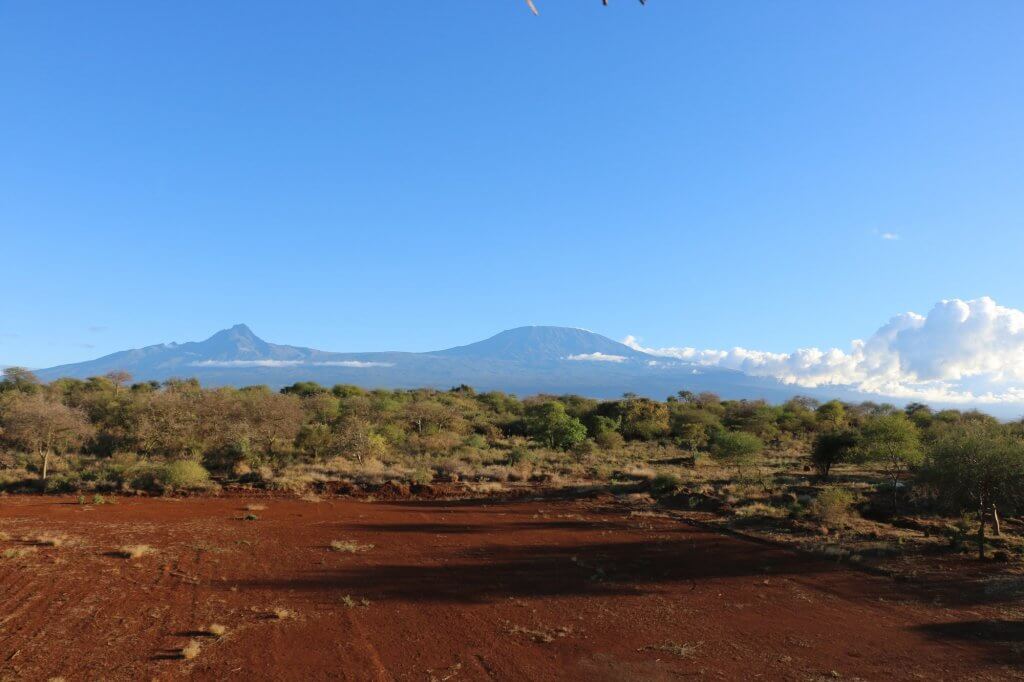
Before going to bed Hugo exported our expenses for Tanzania and worked out the averages per day. As expected Tanzania was more expensive per day than previous countries, but mostly because we didn’t stay for free at anyone, Zanzibar was also quite expensive and we probably ate out more than we should have. See Expenses for all the costs.

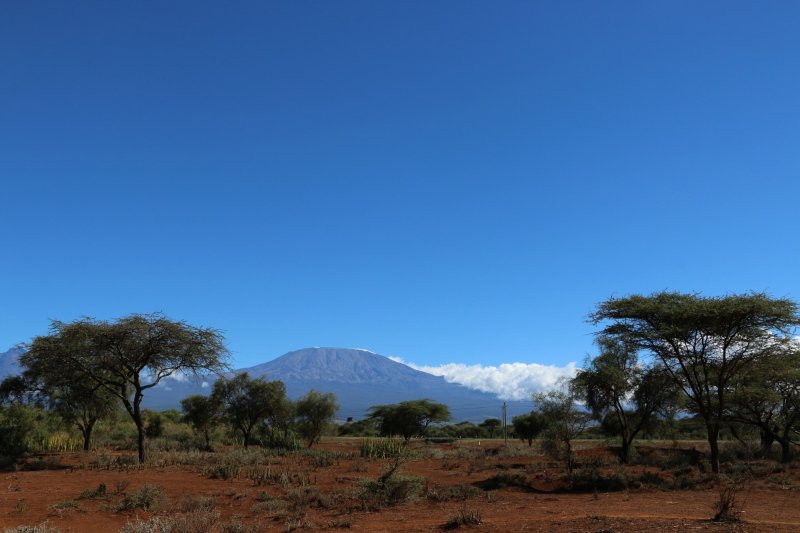
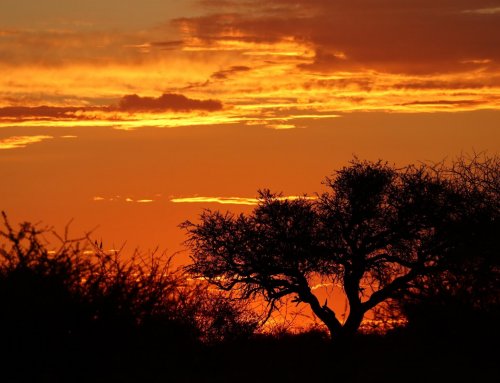
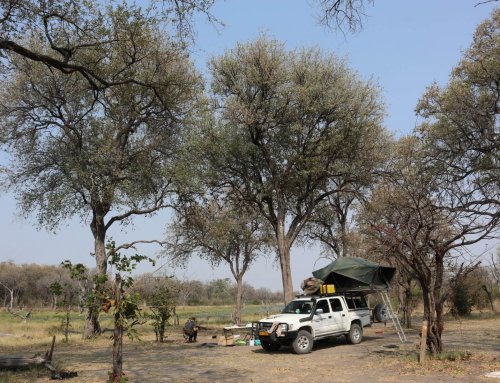
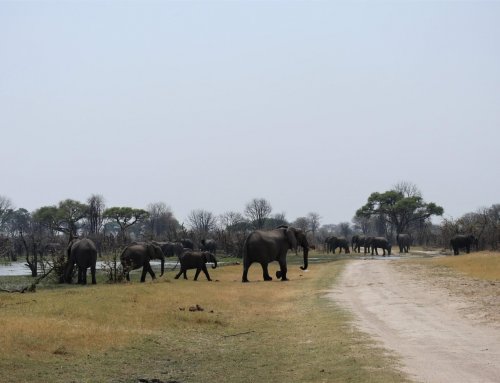
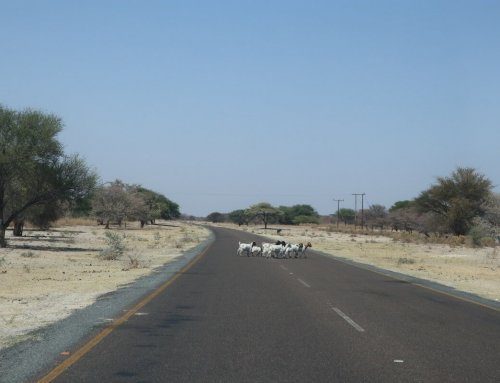
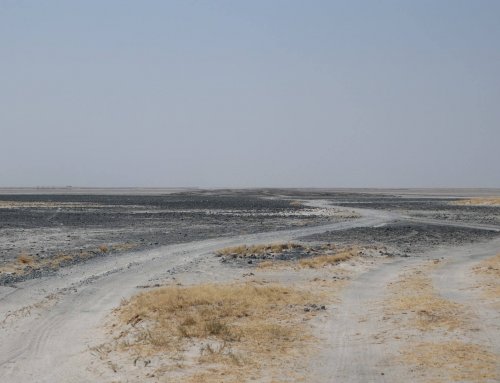
Good morning.
I intend to drive the Oloitokitok to Marangu route tomorrow, and wondered how the road was when you passed there last year. Is it tarmac the whole way these days?
Thanks, Felix
Good morning. It was a perfect tarmac road the whole way with beautiful views.
Hi
We plan to do the same route in Dec 2018. We do not have a Comesa. is there an insurence agent at the Loitokitok border post on the Kenya side where we can buy a COMESA and third party insurance?
Hi, we couldn’t find any insurance agents so only got the Comesa in Nairobi. It is probably a risk to drive without it all the way to Nairobi, but we didn’t see any other way. Some people said we could maybe find 3rd Party Insurance in Emali. Good luck and enjoy!
it is the easiest way from Moshi to Nairobi , compared with the Namanga border crossing which is tallest way, crowded & complicated. From Moshi to Nairobi crossing the border to Kenya, Tarakea is the best compared with passing ArushaN via amanga border place. Period +255676756823